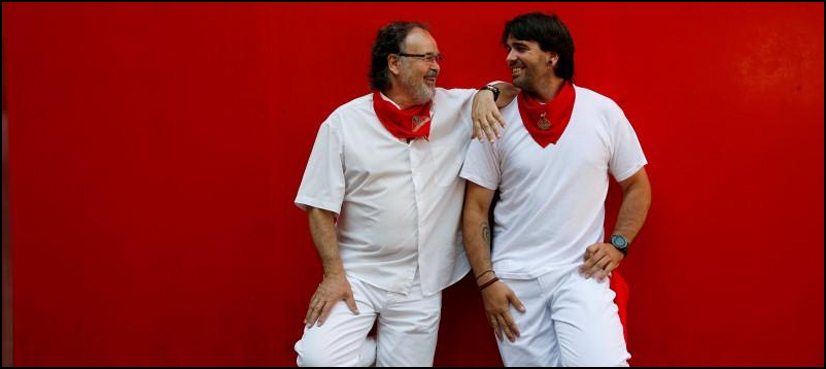Deaf from birth, Colas has to rely on the movement of the mass of people around him to complete the almost kilometer-long dash without being gored or trampled by the specially-bred bulls, which can weigh up to 650 kilograms.
Although some tell him he shouldn’t run, the 35-year-old native of Pamplona says his deafness may even be an advantage as the din of the festival can distract runners from the danger bearing down upon them.
Over the past century 15 people have died in the San Fermin run and many are gored by the bulls’ horns each year. Several Spaniards have already been killed in bull-runs elsewhere in the country this summer.
“The most important thing in the bull-run is what you see, and I see more than others do,” said Colas, who this year celebrates his 20th year of taking part in the event.
The San Fermin bull-run began as a religious festival in the Middle Ages and gained global fame following writer Ernest Hemingway’s 1926 novel “The Sun Also Rises”.
With close to a million Spaniards and foreign revelers now cramming into the northern Spanish town of Pamplona every year for the nine-day event, Colas says he can no longer distinguish the vibrations caused by the bulls and those by the crowd.
“I used to be able to feel the vibration of the stampede and that of the bells of the steers,” he told Reuters in an interview, referring to the tame, guiding bullocks which run alongside the bulls.
But now the sound of the hooves pounding on stone-laid streets is no longer a sure guide.
ADRENALINE
Each year Colas begins in the same spot where, unable to hear the blast of the run’s starter rocket, he climbs a street shop’s security doors to see the bulls as they come charging towards him.
“I like it when the run goes very quickly because more gaps open up in the crowd and I can handle the speed of the bulls and have a cleaner sprint,” he said.
Colas, who works at a local factory run by carmaker Volkswagen, performs one small ritual before the race. He takes a medallion which hangs around his neck and kisses the image of Saint Fermin, namesake of the festival.
When he ran for the first time at the age of 15, his mother, Begona, only found out when she happened to see a photo of him in a local newspaper.
Initially wary, she gradually came around to the idea as running with the bulls was a family tradition. His father, Txema, has been taking part for 40 years.
And for the moment at least, Colas has no plans to hang up his running shoes.
“When I’m in front of the bulls, I have so much adrenaline,” he said. “This is why I keep running, because I love it.”





Leave a Comment